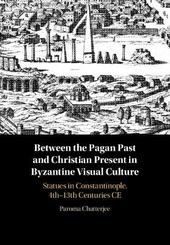
|
Between the Pagan Past and Christian Present in Byzantine Visual Culture: Statues in Constantinople, 4th-13th Centuries CE
Hardback
Main Details
Description
Up to its pillage by the Crusaders in 1204, Constantinople teemed with magnificent statues of emperors, pagan gods, and mythical beasts. Yet the significance of this wealth of public sculpture has hardly been acknowledged beyond late antiquity. In this book, Paroma Chatterjee offers a new perspective on the topic, arguing that pagan statues were an integral part of Byzantine visual culture. Examining the evidence in patriographies, chronicles, novels, and epigrams, she demonstrates that the statues were admired for three specific qualities - longevity, mimesis, and prophecy; attributes that rendered them outside of imperial control and endowed them with an enduring charisma sometimes rivaling that of holy icons. Chatterjee's interpretations refine our conceptions of imperial imagery, the Hippodrome, the Macedonian Renaissance, a corpus of secular objects, and Orthodox icons. Her book offers novel insights into Iconoclasm and proposes a more truncated trajectory of the holy icon in medieval Orthodoxy than has been previously acknowledged.
Author Biography
Paroma Chatterjee is associate professor of art history at the University of Michigan. She is the author of Living Icons: The 'Vita' Image in Byzantium and Italy, 11th-13th Centuries (Cambridge University Press, 2014).
Reviews'This is an exceptional book which effectively establishes the statue as an intellectual category to think with in the Byzantine world. ... The book is a remarkable achievement.' Jas Elsner, University of Oxford
|